
Joint Project Set to Improve Oil Recovery from Reservoirs
even greater improvements by extending needle reach to offer tailored solutions for diverse operational needs, with a view to increasing reservoirs’ recoverable reserves.“Fishbones is one of the well technologies that Aker BP strategically invests in to enhance the value in the IOR (Improved Oil Recovery) portfolio.“The new extended reach-lateral components can further broaden the application range of this technology,” said Per Øyvind Seljebotn, SVP Exploration and Reservoir Development at Aker BP
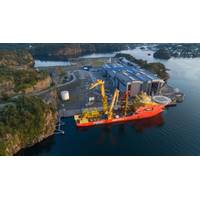
Brownfield Boost: Vigdis Gets a Subsea (Pump) Lift
field. "We have further developed Vigdis in several phases over several years."In December 2018 the license partners – Petoro, Vår Energi, Idemitsu and Wintershall Dea as well as Equinor – decided to invest around $158m in the Vigdis Boosting project, a project for improved oil recovery (IOR), which includes a multiphase boosting station increasing production from existing wells. This pump came on stream in May 2021.Connected to the existing pipeline between Vigdis and Snorre A, the boosting station helps bring the well stream from the subsea field up to the platform. In
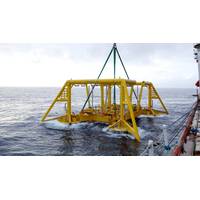
Vigdis Gets a Boost
field in the Norwegian North Sea.The new boosting station, expected to come online in the first quarter of 2021, is expected to raise production by almost 11 million barrels at the subsea field Vigdis, which has been producing oil through the Snorre field for more than 20 years.“This is an improved oil recovery project which includes a multiphase boosting station that will increase production from existing wells. This adds new oil barrels at a highly competitive price,” said Torger Rød, Equinor’s senior vice president for project management control.The boosting station will be
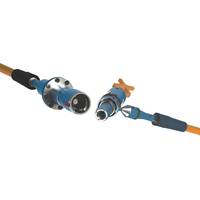
Fiber-Optic Connector Technology for O&G Ops
. The main challenge is to adapt these technologies optimally, in order to create a cost-effective solution meeting installation, deployment and maintenance needs. Industry needs connectors to function reliably when installed subsea and downhole in a well for reservoir surveillance and improved oil recovery. High-temperature wells (e.g., >150°C), where electrical sensing systems face some limitations, were targeted early on for deployment of FO sensing systems. Over the years, FO sensing gained interest among operators, not only for the ability to withstand very high temperatures, but
Aker BP Registers Strong Growth
Interceptor on Ivar Aasen field and other locations, Transocean Arctic on Volund and Boa, commencing drilling activity on the Valhall IP and Resuming plugging of wells at Valhall DP with use Mærsk Invincible. Production company increases its value added from the fields by focusing on improved oil recovery ( IOR ), further development of the resource base and continuous improvement in efficiency and use of resources. On Tam- planned a gas lift project and the drilling of a well. Along with Oda-tie-in project will contribute to the future production Ula area. Preparation for drilling commencement
Polarcus Wins Broadband 4D Project off Norway
Polarcus Limited has received a Letter of Intent (LOI) for a 4D project over a field offshore Norway. This will be the eight monitor survey over the field and is part of an improved oil recovery (IOR) plan. The survey is due to commence in May 2016 and will run for approximately eight weeks, Polarcus said. Commenting on the award, Polarcus COO Duncan Eley stated, “We are very pleased to have been chosen for this 4D acquisition which has been designed to develop a monitoring program for optimal well placement and drainage of the field. The project now forms part of a substantial
More Oil from Gullfaks - Statoil
Production from the Gullfaks South (GSO) fast-track project for improved oil recovery in the North Sea started on 27 July. GSO will increase the output from the Gullfaks area by around 65 million barrels of oil equivalent. "GSO demonstrates how we can increase recovery and profitability by use of standardised, simplified development solutions tied to existing infrastructure,” says Arild Dybvig, vice president for fast-track projects in Development & Production Norway. Production started three years after the project was approved. NOK 9 billion have been invested in the
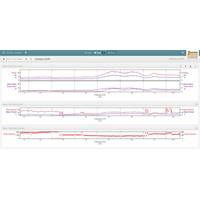
FUGRO Supports AlVheim Improved Oil Recovery Project
Fugro is providing wave measurements to support construction operations at an improved oil recovery (IOR) project on the Norwegian continental shelf, around 225 kilometres west of Stavanger. The subsea infrastructure on the Alvheim field (operated by Det norske oljeselskap ASA) is being extended by offshore construction expert Technip and involves four areas that are being tied-in via subsea wells to improve oil production rates. Technip’s subsea operations – the installation and tie-in of spools and protection covers, along with a manifold – are being performed at depths of
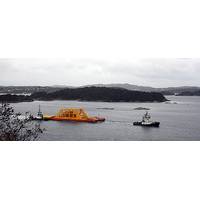
Statoil: Subsea Wet Gas Compressor Coming to Gullfaks
the field’s productive life. Local technology cooperation Starting back in 2008 the efforts to develop and qualify the compressor in line with Statoil’s requirements represent a good example of Statoil’s cooperation with the Norwegian supply industry to develop robust improved oil recovery solutions. “The compressor in principle builds on Framo Engineering’s multi-phase pumps, which have been used by Statoil for several decades, including on the Gullfaks field,” says Bjørn Birkeland, project manager for the Gullfaks subsea project. The



 February 2024
February 2024





